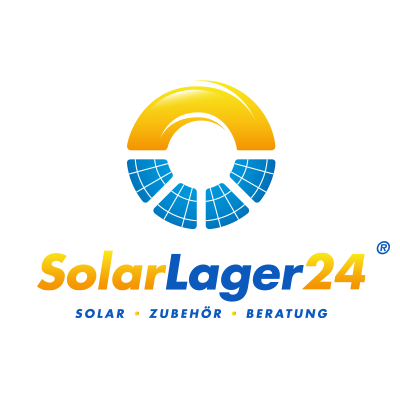A
- AC connection
- The interface at which the inverter feeds the generated alternating current into the house grid.
- Payback period
- Period until the investment in a PV system pays off through saved electricity costs.
- Connected load
- Maximum power that may be connected to the house network or the mains connection.
- Plant monitoring
- Systems for recording yield, errors and operating data of the PV system.
- Degree of self-sufficiency
- Percentage of the home's electricity needs covered by the PV system.
B
- Balcony power plant
- Small plug-and-play PV system for balcony or terrace (usually 300–800 W).
- Battery storage
- Stores excess solar power for later use and increases self-consumption.
- Bifacial module
- Modules that absorb light from the front and back and can thus deliver higher yield.
- Reactive power
- Power that circulates in the grid but is not converted into usable active power.
- BYD storage
- Branded batteries with high scalability and reliability (LiFePO4 technology).
C
- Charge Controller
- Controller for controlling the charging of batteries in off-grid systems.
- CIS solar module
- Thin-film module type with good performance in diffuse light conditions.
- CO2 balance
- Ecological balance of a PV system over its life cycle.
- Cradle to Cradle
- Concept for recycling-friendly design and sustainable production.
D
- roof hook
- Mechanical fasteners for mounting PV rails on tiled roofs.
- DC cable
- Cables that carry direct current between solar modules and inverters.
- Degradation
- Long-term performance loss of solar modules due to aging.
- Direct consumption
- Electricity that is consumed directly in the household, without intermediate storage.
- Double-glass module
- Robust modules with glass on the front and back for longer service life.
E
- Own consumption
- Percentage of solar power generated that is used directly in the household.
- Feed-in tariff
- Compensation for solar power fed into the public grid.
- Enphase microinverters
- Microinverters that are installed per module and enable module optimization.
- Energy management
- Software and hardware solutions to optimize generation, consumption and storage.
- Earnings forecast
- Estimation of the expected energy yield of a PV system at a location.
F
- Flat roof system
- Mounting systems for modules on flat roofs (ballasted or screwed).
- Funding programs
- Regional and national subsidies for PV, storage and charging infrastructure.
- Fronius inverters
- Inverter manufacturer with extensive monitoring ecosystem.
- Frequency converter
- Technique for adjusting frequency and power in specific systems.
- Full-black module
- Aesthetically continuous black modules, popular for visible installations.
G
- Glass-foil module
- Standard construction: glass in front, polymer film in the back – lighter than glass-to-glass.
- Glass-glass module
- Extremely durable modules with two glass layers – low degradation.
- GSE in-roof system
- In-roof solutions that visually combine roof and PV module.
- Warranty conditions
- Manufacturer information on performance guarantees and product guarantees.
- Generator connection box
- Central connection point for strings, fuses and surge protection.
H
- Half-cell module
- Modules with split solar cells to reduce power losses due to shading.
- Hybrid inverter
- Combines inverter functions with battery storage management.
- High-voltage storage
- Storage systems with a high system voltage spectrum for greater power densities.
- Hot spot effect
- Local overheating of cells due to partial shading or defects.
- High-efficiency module
- Modules with particularly high efficiency – ideal for small roof areas.
I
- IBC solar modules
- High-performance modules with improved cell connections and high efficiency.
- Island system
- Self-sufficient PV system without grid connection, often with battery storage.
- Installation accessories
- Mounting materials, cables, plugs and small parts for installation.
- IP protection class
- Protection class against dust and water – relevant for outdoor components.
- Commissioning protocol
- Documentation of the safe commissioning and testing of the PV system.
J
- Jinko solar modules
- Brand for cost-effective, reliable solar modules.
- Annual performance factor (APF)
- Key figure for evaluating the efficiency of heating and energy systems over one year.
K
- Kilowatt peak (kWp)
- Nominal power of a module or system under standard test conditions.
- Cable management
- Neat and safe cable routing to prevent damage and loss.
- KfW funding
- KfW Bank funding programs for energy projects and storage.
- Small wind power
- Small wind turbines as a complement to PV at suitable locations.
- Climate neutrality
- The aim is to offset or avoid greenhouse gases through life cycle measures.
L
- LiFePO4 battery
- Safe, long-lasting lithium iron phosphate storage for PV applications.
- Load management
- Control of electrical consumers to optimize self-consumption.
- charge controller
- Regulates charging processes in off-grid systems and protects batteries from overcharging.
- LG Solar
- Well-known manufacturer of high-quality solar modules (brand example).
- Performance optimizer
- Module-specific optimizers that optimize modules independently of each other.
M
- Monocrystalline
- Highly effective cell technology with dark color and high efficiency.
- Microinverters
- Inverter per module for better shading performance.
- Mounting rail
- Aluminum or steel profile for mounting PV modules.
- MPP tracker
- Controls the optimal operating point of the modules for maximum yield.
- Monitoring system
- Software for monitoring plant performance and troubleshooting.
N
- Grid feed-in
- Excess solar power is fed into the public grid.
- Emergency power function
- Ability to provide local power to critical consumers in the event of a grid failure.
- Zero feed-in
- Technology to avoid grid feed-in (e.g. in case of regulatory requirements).
- Tracking system
- Mechanical systems that track modules to the sun and increase yield.
- Rated power
- The continuous power rating of a device or module.
O
- Off-grid system
- Self-sufficient system without grid connection, usually with storage and generator.
- Open-loop system
- Technical term for certain control architectures (example).
- East-west orientation
- Distribution of modules to the east and west for longer yield periods.
- OptiTrac Global Peak
- Example name for manufacturer algorithms for MPP optimization.
P
- Photovoltaics
- Direct conversion of sunlight into electrical current using solar cells.
- PV storage
- Storage specifically for the temporary storage of PV power.
- Complete PV system
- Pre-configured packages consisting of modules, inverters, mounting and accessories.
- Peak power
- Maximum power output under optimal conditions (kWp).
- Plug-and-play system
- Simple systems for self-installation without complex commissioning.
Q
- Q-Cells
- Brand example for solar modules with good price-performance ratio.
- Quality control
- Tests and inspections to ensure long life and performance.
- Square module
- Rare form factors; usually special design applications.
R
- terminal block
- Electrical terminal connectors for secure module or string connections.
- Non-return valve
- Prevents current from flowing back into certain branches of the system.
- recycling
- Recycling of module materials at the end of their life cycle.
- Relay card
- Electronic component for control and switching functions in systems.
- Redox flow battery
- Flow batteries with high scalability for stationary energy storage.
S
- Smart Meter
- Smart electricity meter for measuring consumption and feed-in.
- Solar thermal energy
- Generation of heat from solar energy (separate from PV).
- SolarEdge inverters
- Manufacturer known for module optimizers and monitoring solutions.
- Storage capacity
- Amount of energy that a storage device can store (kWh).
- String inverter
- Classic inverters for string configurations on roofs.
T
- Trina solar modules
- Well-known module manufacturer with a broad portfolio.
- Trapezoidal sheet metal assembly
- Mounting systems specifically for trapezoidal metal roofs.
- Temperature sensor
- Sensors for monitoring module temperature and performance.
- Type 2 plug
- Standard plug connection for AC charging of electric cars in Europe.
- Tracking system
- Mechanical tracking systems for maximum irradiation yields.
U
- Surge protection
- Protective devices that protect sensitive components from voltage spikes.
- Conversion efficiency
- Relationship between the input and usable power of a component.
- Substructure
- Supporting structure that holds modules securely on roofs or surfaces.
- UPS system
- Uninterruptible power supply for critical loads.
V
- Remuneration rate
- Fixed price for electricity fed into the grid (kWh) in certain programs.
- Shading
- Shading of modules by objects, which reduces performance.
- Full load hours
- Fictitious hours during which a system would operate at rated power to achieve the annual yield.
- VDE standard
- Technical standards and testing requirements for electrical systems in Germany.
- V2G (Vehicle-to-Grid)
- Technology for feeding energy from electric vehicles back into the grid.
W
- Wallbox
- Wall charging station for charging electric vehicles, often with smart functions.
- Inverter
- Converts direct current from the modules into grid-compliant alternating current.
- Efficiency
- Measure of the efficiency of components in energy conversion.
- heat pump
- Heating/cooling technology, easily combined with PV and storage.
- Watt hours (Wh)
- Unit for measuring energy (power over time).
Z
- Bidirectional meter
- Measures both the consumption and feed-in of electrical power.
- Meter location
- Location of the house installation where meters and connections are mounted.
- Brick assembly
- Mounting system for roof tiles with special roof hooks and fastenings.
- Cycle stability
- Information on the durability of batteries in charge/discharge cycles.

